
He is the father of the C language, the recipient of the Turing Award in 1983, and a key developer of Unix. However, he missed out on his PhD due to his “stubbornness,” and his doctoral thesis was lost for half a century. Now, this mysterious doctoral thesis has finally resurfaced.
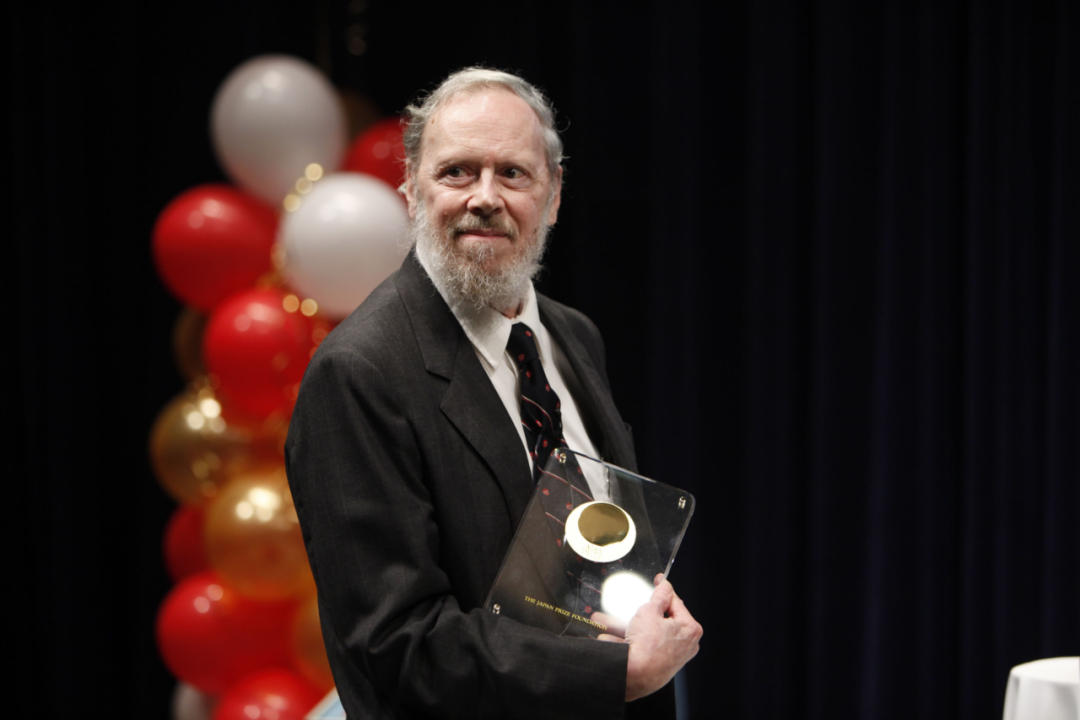
Image of Dennis Ritchie (1941-2011): Source: CodePen Home | Dennis Ritchie Tribute Page
Compiled by the WeChat public account “Machine Heart”
Source: CHM
Original by David C. Brock
For computer professionals, Dennis Ritchie is not a stranger. He graduated from Harvard University with a degree in Applied Mathematics in the late 1960s and “followed in his father’s footsteps” by joining Bell Labs, where he spent his entire career. Shortly after joining Bell Labs, Ritchie, along with Ken Thompson, developed the Unix operating system and the enduring C language. Thompson led the system’s development, while Ritchie spearheaded the creation of the C language. After the C language was released, Thompson rewrote Unix using it. In 1983, Dennis Ritchie and Ken Thompson jointly received the Turing Award.
Half a century later, Unix has become the foundation for most operating systems in the digital world, and C has become one of the most popular programming languages in the world.
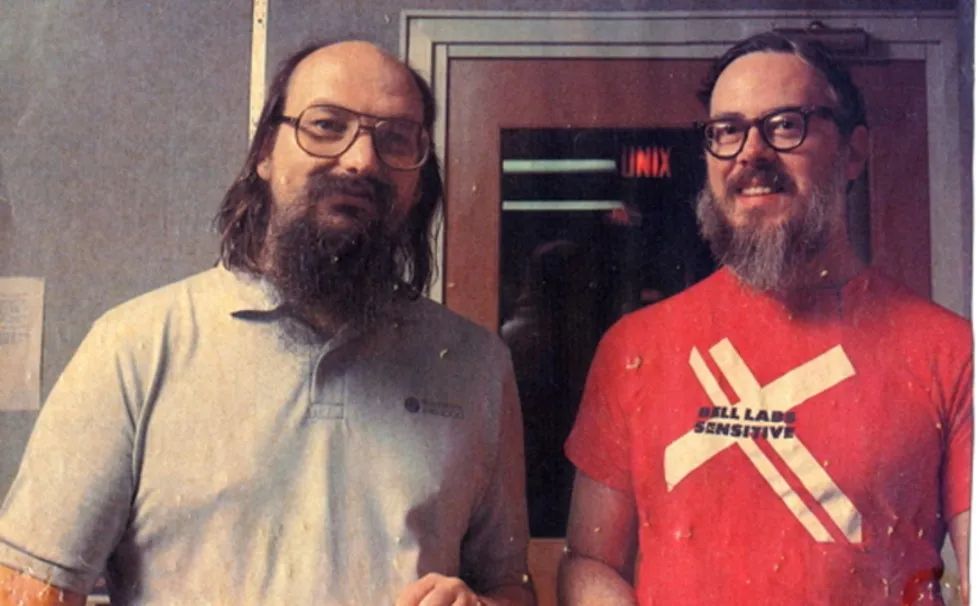
Ken Thompson and Dennis Ritchie
Although Dennis Ritchie passed away in 2011, Bell Labs still maintains his personal homepage. On this page, Ritchie describes his academic journey in computer science in his characteristic dry tone:
I studied undergraduate physics at Harvard and further pursued applied mathematics for my graduate studies… My doctoral thesis (1968) was on subrecursive hierarchies. My undergraduate studies made me realize that my intellect was insufficient to become a physicist, and moving towards computer science seemed quite promising. My graduate experience further clarified that my intellect was also insufficient to make me an expert in algorithm theory. I personally preferred procedural languages over functional languages.
Regardless of whether these self-assessments are objective, the path Ritchie chose indeed led him to a field where he could shine.
Despite Ritchie’s fame in the computer field, it is little known that his doctoral thesis has rarely been seen by anyone because it was lost.
Indeed, it was lost; it was neither published nor included in any public records, and even the Harvard University library catalog and thesis database could not locate it. When Ritchie passed away in 2011, his sister Lynn meticulously searched through Harvard’s records and other channels but found no copy.
After much effort, she eventually found a copy from Ritchie’s advisor’s widow. However, due to the lack of a public copy, fewer than a dozen people had read the thesis in the past half-century.
Why did this happen?
In Ritchie’s self-description, we note that he did not explicitly state that he obtained his PhD with the 1968 thesis. The reality is: he indeed did not obtain a PhD.
What happened? Ritchie’s graduate school classmate, MIT professor Albert Meyer, provided an unexpected answer.
He gave up his PhD because he didn’t want to pay the binding fee
Albert Meyer recalled:
The explanation I heard from our advisor, Patrick Fischer, was that at the time, Harvard had a rule: to obtain a PhD, one had to submit a bound copy of the thesis to the library, and only then would the library provide a certificate for the PhD. At that time, Dennis (Ritchie) had already submitted the thesis to the thesis review committee and received approval. He had also typed up a copy to submit to the library, but the library told him that the thesis needed to be bound before submission. At that time, the binding fee was not a small amount… It wasn’t so expensive that he couldn’t afford it, but it was still quite a sum. According to Patrick, Dennis’s attitude was: “If Harvard Library wants a bound thesis, they should pay for it themselves; I won’t pay!” Clearly, he did just that and thus did not obtain his PhD.
So, the reason this big shot did not obtain a PhD was not due to issues with the thesis itself, but rather his “stubbornness” in refusing to pay the binding fee!
After extensive inquiries, Lynn confirmed that Ritchie indeed did not submit a bound thesis and did not obtain a PhD from Harvard, but Ritchie’s brother John believed that his “stubbornness” was not solely due to the binding fee: Ritchie already had a dream job as a researcher at Bell Labs, and he was the kind of person who “didn’t care about the trivialities of life.”
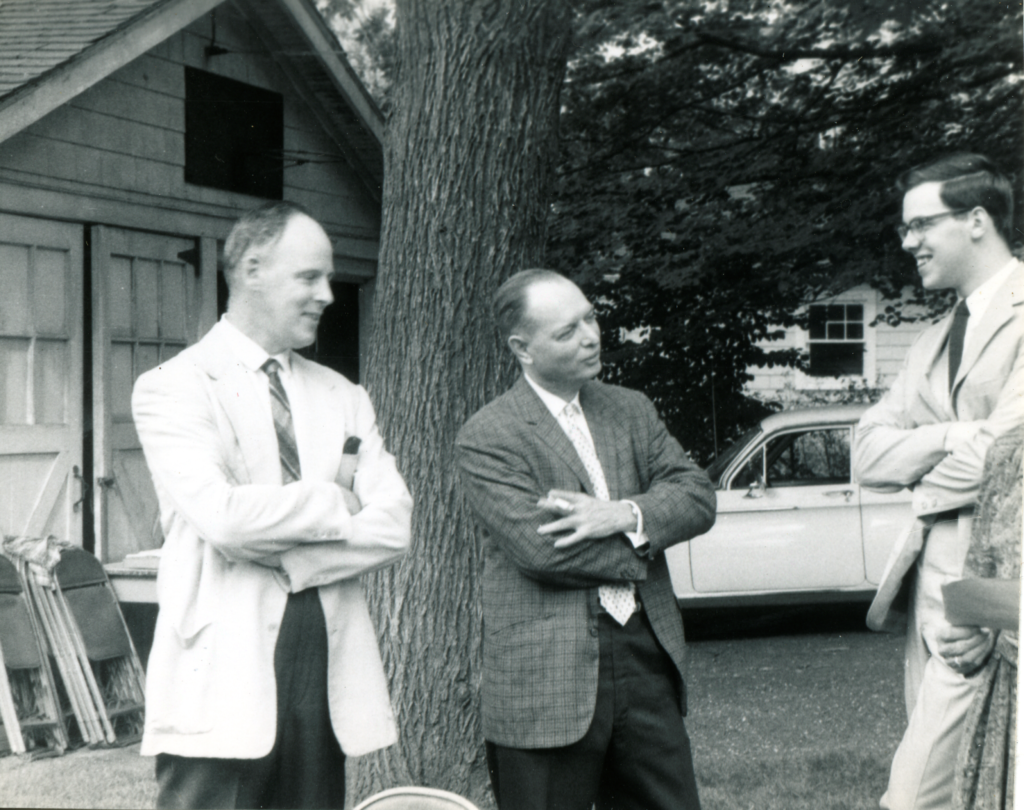
When he first entered Bell Labs, Dennis Ritchie (right) worked with his father Alistair (left) and electronic switch pioneer William Keister (middle).
Recently, Ritchie’s family donated some of his belongings to the Computer History Museum (CHM), the most important of which is a photocopy of Ritchie’s doctoral thesis, marking the first public appearance of this thesis in half a century. Also donated were early source codes of Unix (1970-71).
This thesis, written in 1968, is titled “Program Structure and Computational Complexity,” and Ritchie was 27 years old at the time. Now, Ritchie has passed away, and the thesis has long since faded and yellowed.
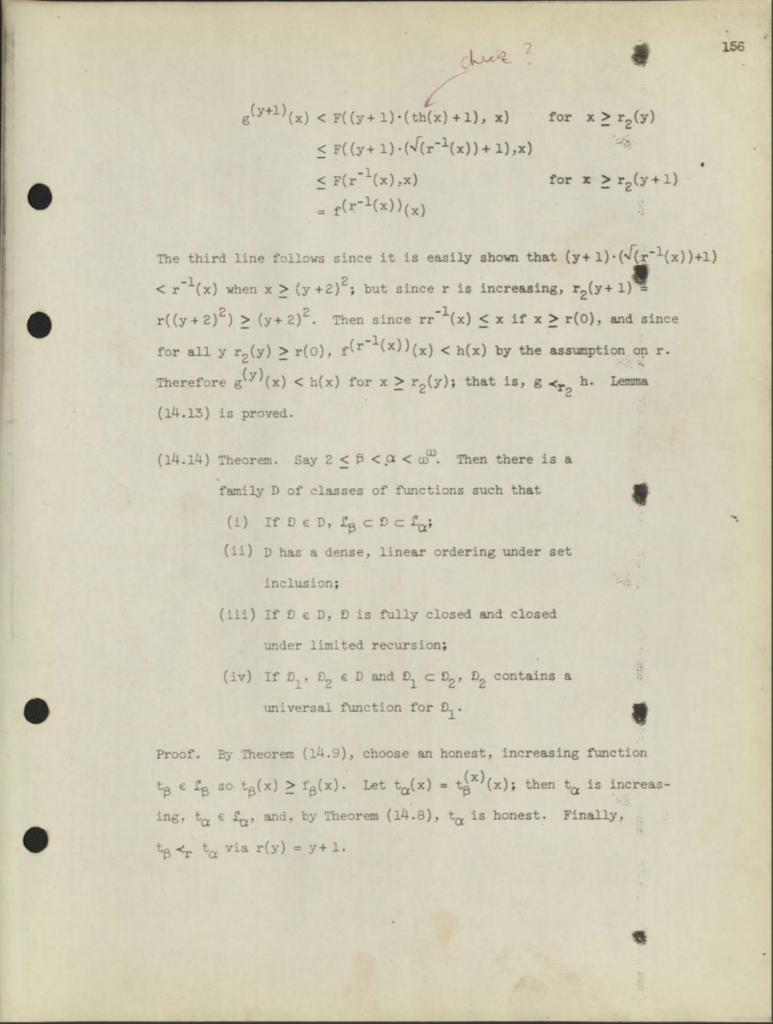
The manuscript of Dennis Ritchie’s lost thesis is publicly available for the first time.
Along with the photocopy, an electronic version of the thesis has also been made public.
Thesis link:
https://archive.computerhistory.org/resources/access/text/2020/05/102790971/Ritchie_dissertation.pdf
Perhaps this thesis can give us a glimpse into the early development of computer science and the challenges faced by the pioneers of that time. Additionally, it can remind us how far we have come on this path and the changes technology has undergone in a person’s brief lifetime.
Decoding Dennis Ritchie’s Doctoral Thesis
Restoring and making Ritchie’s thesis manuscript public is one thing; understanding it is another.
To understand the content of this thesis, we need to return to the early 20th century, the era when mathematicians, philosophers, and logicians explored the ultimate foundations of mathematics.
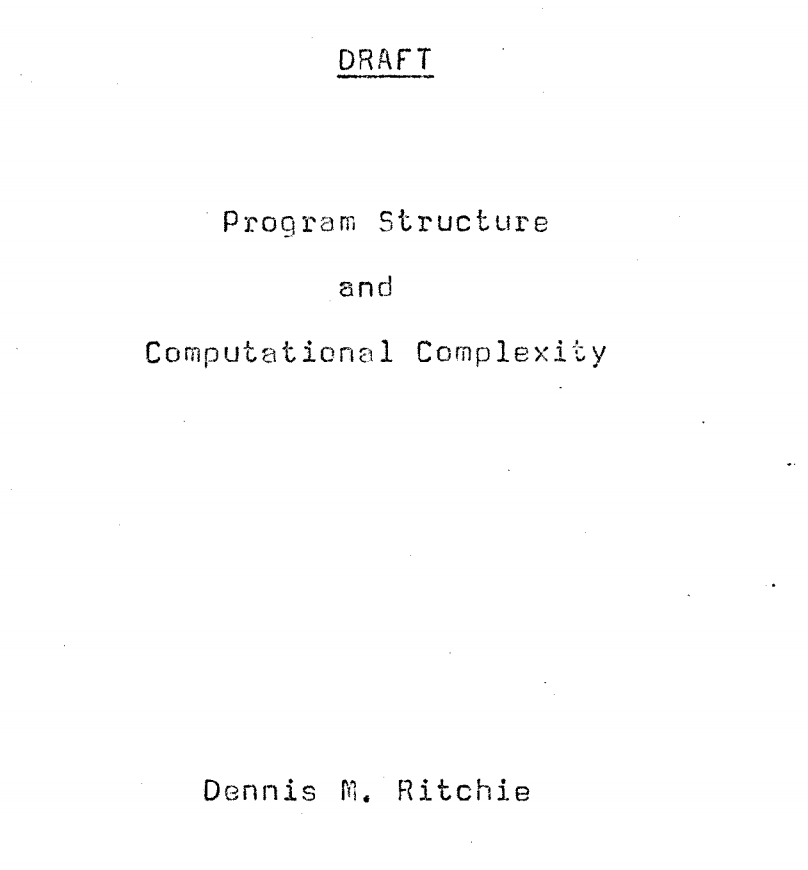
Cover of Ritchie’s doctoral thesis
For several centuries prior, the characteristics of mathematical knowledge—exactitude and certitude—placed it in a special, even sacred position. Philosophical reflections on the sources or foundations of these mathematical characteristics can be traced back to Pythagoras and Plato, while in the early 20th century, influential mathematicians and philosophers established formal logic (expressing rules and reasoning steps using symbolic systems) as the foundation of mathematics.
In the 1920s, German mathematician David Hilbert sought to defend the view of formal logic as the foundation of mathematics and had a significant impact. Specifically, Hilbert believed that one could construct certain properties of mathematics through specific proofs in formal logic, such as the absence of contradictions in mathematics and that any mathematical statement is either true or false.
The proofs advocated by Hilbert are “finitist,” relying on the manipulation of formal logic’s symbolic expressions using simple, explicit, almost mechanical rules.
In the 1930s, as people sought such symbolic logical manipulation rules, mathematicians and philosophers connected them with computation and established rigorous processes for humans to use “computers” and mechanical calculators to perform mathematical operations.
Kurt Gödel provided such proofs advocated by Hilbert but demonstrated the opposite of what Hilbert expected. Gödel’s logic did not show that the logic ensuring everything in mathematics is correct can be proven; rather, it led to the opposite conclusion, namely Gödel’s incompleteness theorem.
For this shocking result, Gödel’s proof relied on arguments about specific mathematical objects called primitive recursive functions. The focus of Gödel’s recursive functions is that they are computable and depend on “finite processes,” which are the simple, almost mechanical rules that Hilbert envisioned.
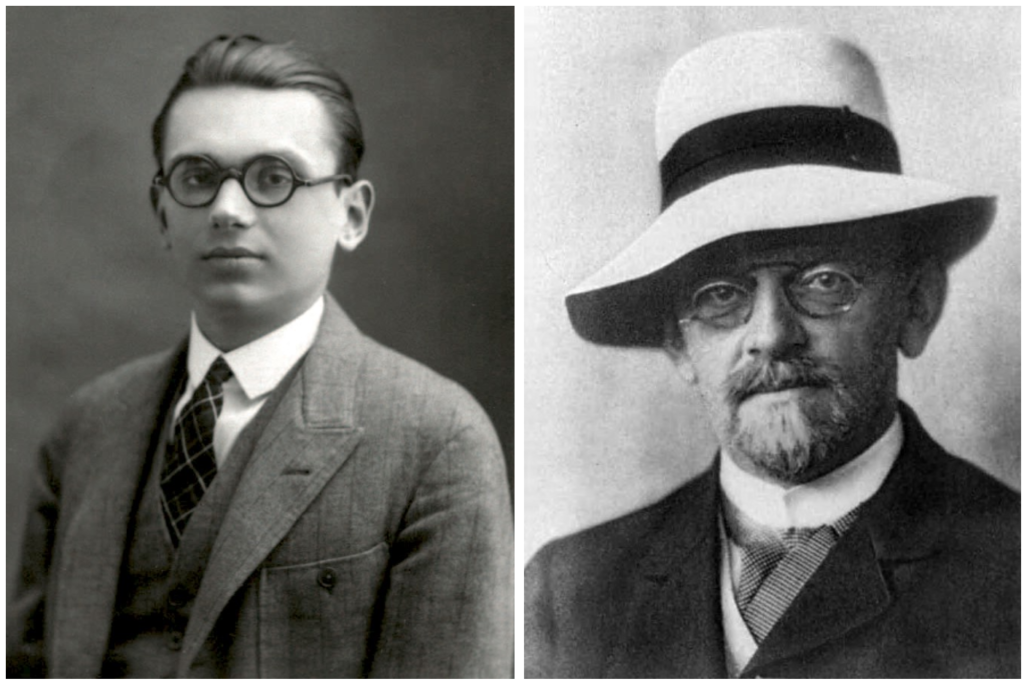
Left: Gödel as a student (1925); Right: David Hilbert (1912).
After Gödel, American mathematician Alonzo Church used similar computability arguments to form logical proofs that not only showed that mathematics is not always decidable, but that some mathematical statements cannot even be determined to be true or false. Church’s proof is based on the concept of effectively calculable functions, which is based on Gödel’s recursive functions.
Almost simultaneously, British mathematician Alan Turing constructed a proof with the same results, but his proof is based on the concept of “computability” defined by the operations of an abstract “computing machine”. This abstract Turing machine can perform any computation and later became a fundamental basis of theoretical computer science.
In the following decades, before computer science became an established discipline, mathematicians, philosophers, and others began to explore the nature of computation, gradually distancing it from its connection to the foundations of mathematics.
As Ritchie’s classmate, MIT professor Albert Meyer, recounted in an interview:
In the 1930s and 1940s, there was extensive research and understanding of “what is computable and what is not computable.” Gödel and Turing placed logical limits on computable and non-computable things. However, new ideas emerged in the 1960s: “Let’s try to understand what can be done with computation,” and it was then that the concept of computational complexity emerged… You can do everything through computation, but not everything is that easy… What will the effects of computation be?
With the rise of electronic digital computation, for these researchers, the question was no longer about the impact of logical arguments on the essence of mathematics, but rather the revelation of the limitations of computability itself by these logical arguments.Once these limitations were fully understood, researchers’ interests shifted to the essential questions of computability within these limitations.

MIT professor Albert Meyer.
Part of the exploration of the above questions occurred in the mid-1960s when Dennis Ritchie and Albert Meyer both entered Harvard University’s Applied Mathematics Department for graduate studies, which was often the place where electronic digital computation practices took root on campus.
From then on, Ritchie and Meyer became increasingly interested in computational theory, leading them to find Patrick Fischer as their advisor. Fischer had just obtained his PhD and had not been at Harvard long, coinciding with Ritchie and Meyer’s graduate studies. Meyer recalled: “Patrick was very interested in understanding the nature of computation. He wanted to know what makes things complex and what makes them simple… What can different types of programs do?”
A Summer Assignment
After a year of graduate study, Fischer hired Ritchie and Meyer as summer research assistants. The work assigned to Meyer was to investigate an “open problem” that Fischer had discovered in computational theory and to report back before the end of summer. Fischer was about to leave Harvard at that time.
Meyer spent the entire summer working on this problem alone but completed only a small part before the summer ended. Soon after, while on his way to a seminar, Meyer suddenly thought of a solution and excitedly told Fischer about this breakthrough. To Meyer’s surprise and slight disappointment, Fischer told him that Ritchie had already thought of a solution. It turned out that he had assigned the same problem to both of them without telling them that they were both working on it!
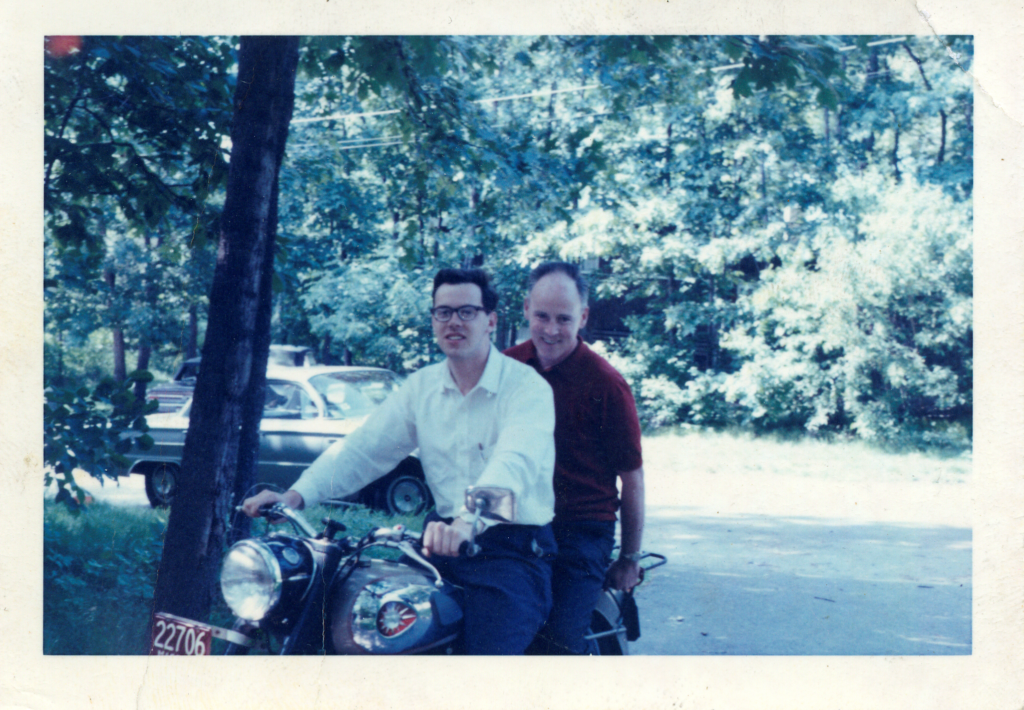
Dennis Ritchie and his father Alistair
The problem Fischer assigned to both was a significant question about computational complexity, relating to the relative ease or time of computing one thing compared to another. Recall that Gödel used primitive recursive functions to illustrate the computability of finite processes, which was a key point in his famous paper. In the 1950s, Polish mathematician Andrzej Grzegorczyk defined a hierarchy of these recursive functions based on the rate of growth of functions. Fischer’s summer problem was to have Meyer and Ritchie explore the relationship between this hierarchy of functions and computational complexity.
Fortunately, Meyer’s appreciation for Ritchie’s solution offset his disappointment; he recalled, “…the concept of loop programs proposed by Dennis was truly beautiful and so important; it was a very good explanatory mechanism and a clever way to clarify the subject. I didn’t even care whether he solved the problem or not.”
And the loop program that Ritchie proposed during that summer became the core of his 1968 doctoral thesis. In fact, loop programs are very small, very limited computer programs, and anyone who has written a loop program in BASIC using the FOR command should be familiar with them.
In a loop program, you can set a variable to zero, increment a variable by 1, or move a variable’s value to another variable. That’s it. The only control available in a loop program is a simple loop, where a sequence of instructions is repeated a certain number of times. Importantly, loops can be “nested,” meaning loops within loops. Ritchie demonstrated in his doctoral thesis that these loop functions are precisely what is needed to produce Gödel’s primitive recursive functions, and only these functions; they perfectly reflect the hierarchy proposed by Grzegorczyk.
Gödel believed that his recursive functions had strong computability, while Ritchie proved that loop programs were the appropriate tool to accomplish this task. Ritchie’s thesis showed that the degree of nesting of loop programs is a measure of their computational complexity and also a measure of the time required for computation. Furthermore, he pointed out that evaluating the depth of loops corresponds exactly to Grzegorczyk’s hierarchy. The growth rate of primitive recursive functions is indeed related to their computational complexity; in fact, they are the same.
Meyer recalled: “Loop programs were made into a very simple model that any computer scientist could immediately understand. When explaining the original recursive hierarchy, traditional formulas used very complex logical symbols to represent complicated syntax, which was difficult for ordinary people to grasp. But now, you suddenly find a three or four-line explanation of loop programs that clearly describes the computer science concept.”
He also explained: “Dennis was a very lovely, easy-going, humble person. Clearly, he was very smart, but also somewhat taciturn… We discussed our co-authored paper, ‘The Complexity of Loop Programs.’ He read the paper and provided his feedback and explained loop programs to me.”
In 1967, this paper was published by ACM. This paper marked the beginning of a prolific era in Meyer’s theoretical computer science career and was an important step in his professional journey. However, for him and Ritchie’s collaboration, it was the end.
“It was really disappointing. I wanted to collaborate with him because he seemed smart, friendly, and it was fun to work with him. But, you know, he was already doing other things. He was playing ‘Spacewar’ all night!” Meyer recalled the scene at that time.
Let us return to Ritchie’s self-assessment mentioned at the beginning of the article: “My graduate experience made me realize that my intellect was insufficient to make me an expert in algorithm theory.”
After understanding this doctoral thesis, we find that he seems to have been lying. Perhaps, compared to theoretical research, implementation was more enticing for Ritchie, which is why he chose to explore the boundaries, essence, and possibilities of computation by creating new systems and languages.
Compiled from:
https://computerhistory.org/blog/discovering-dennis-ritchies-lost-dissertation/
This article is reproduced from the WeChat public account “Machine Heart”
(ID: almosthuman2014)
▽ Highlights Recap ▽


